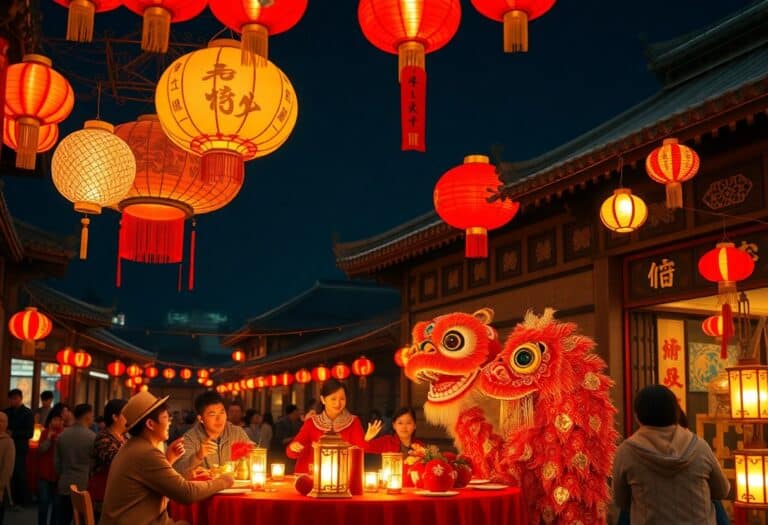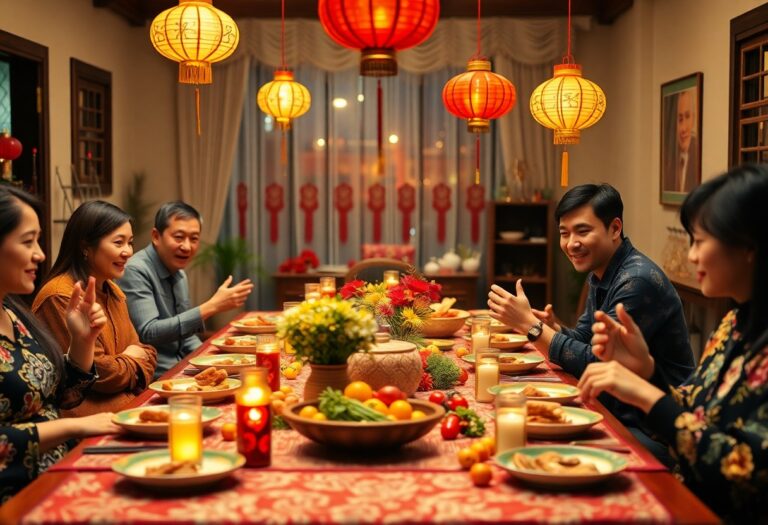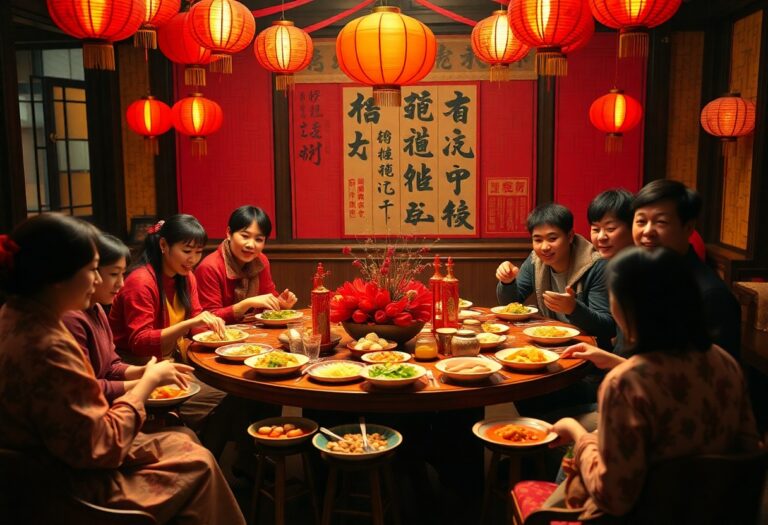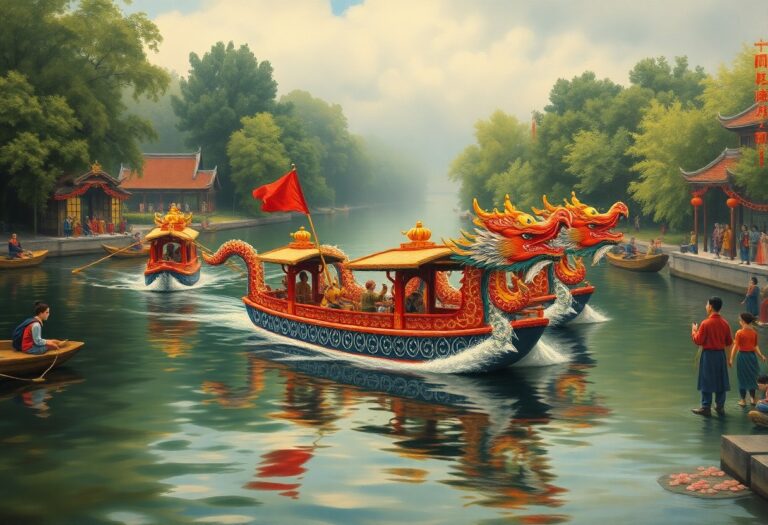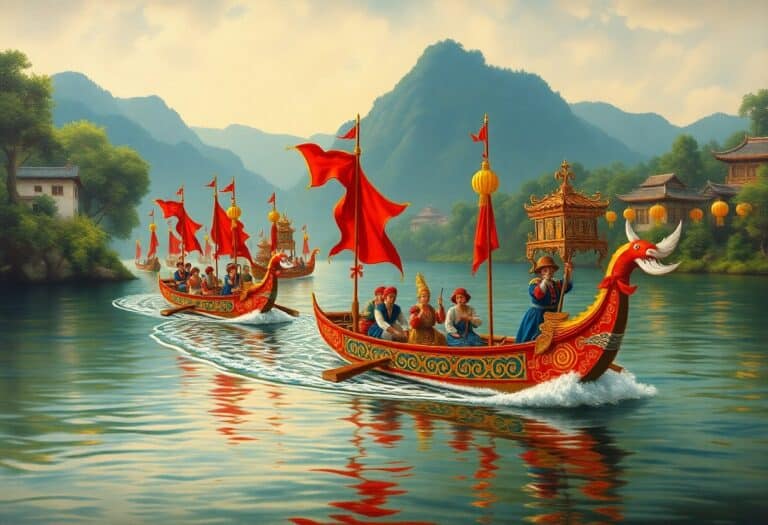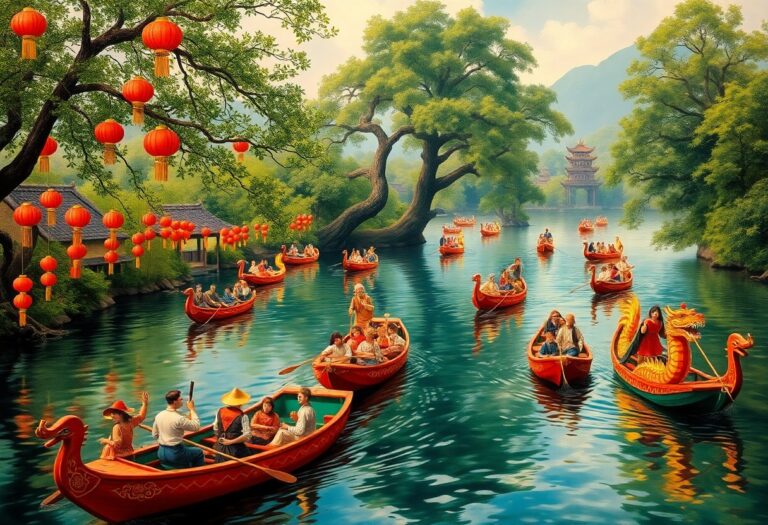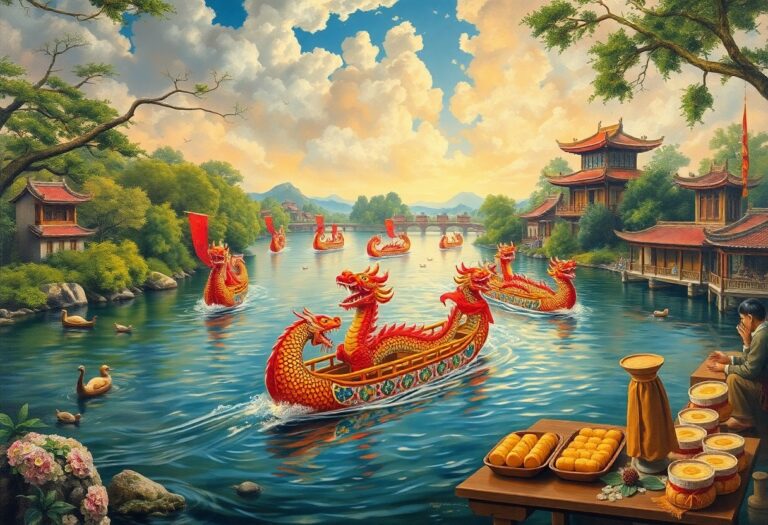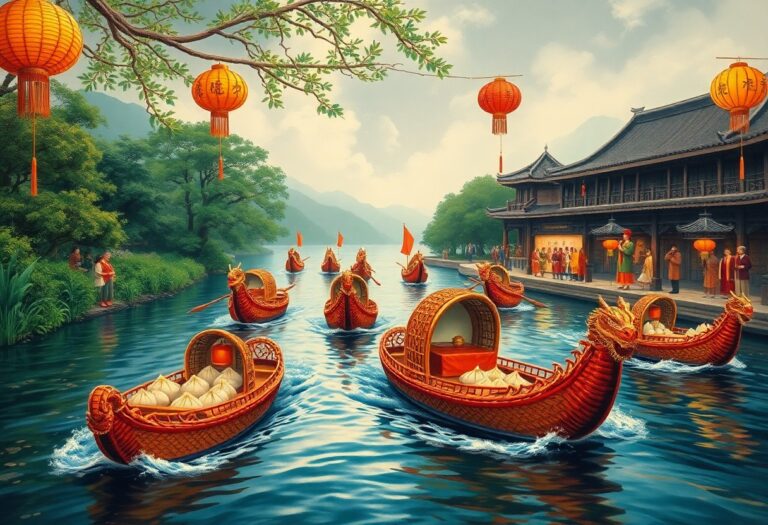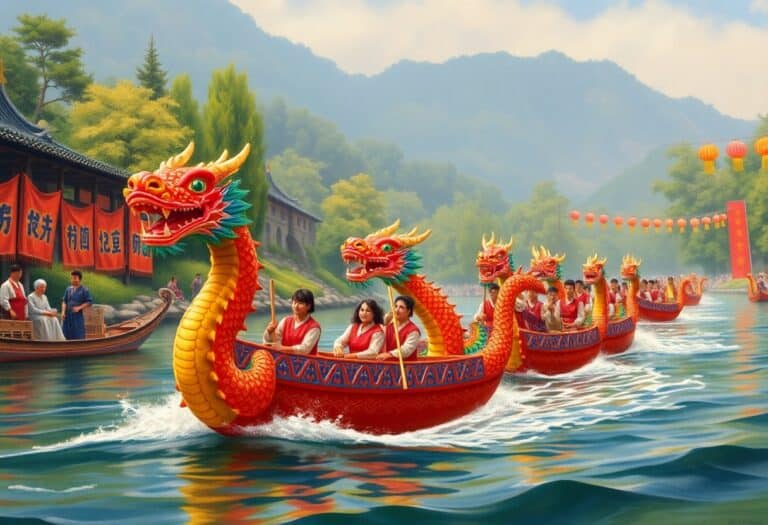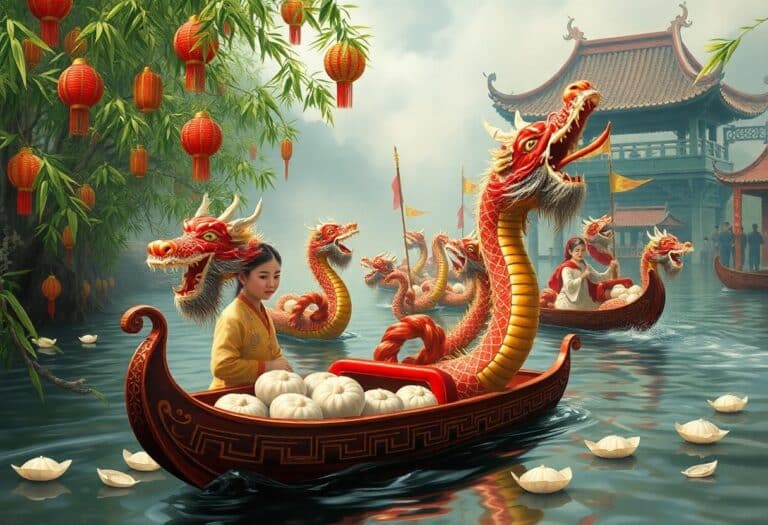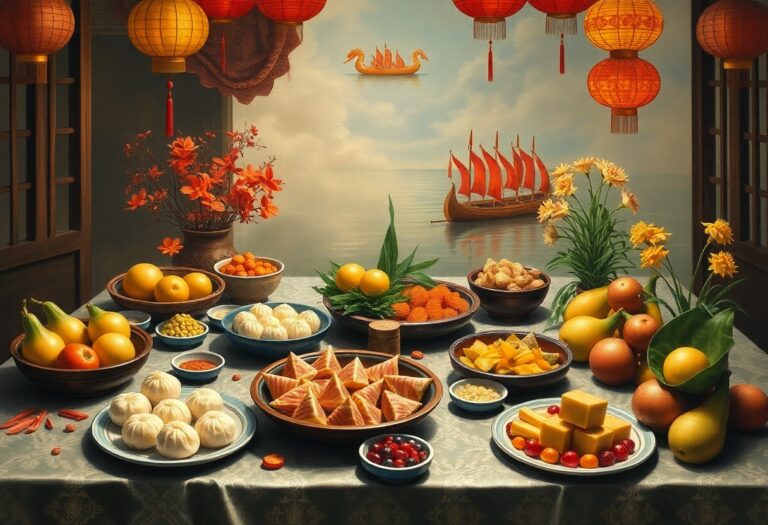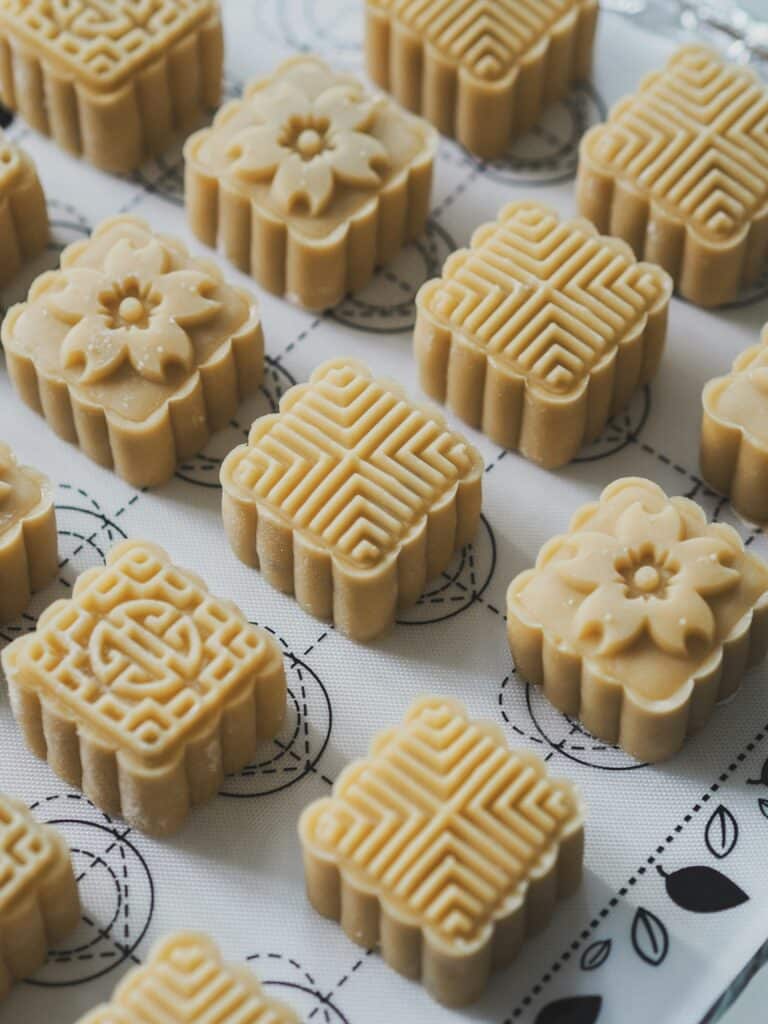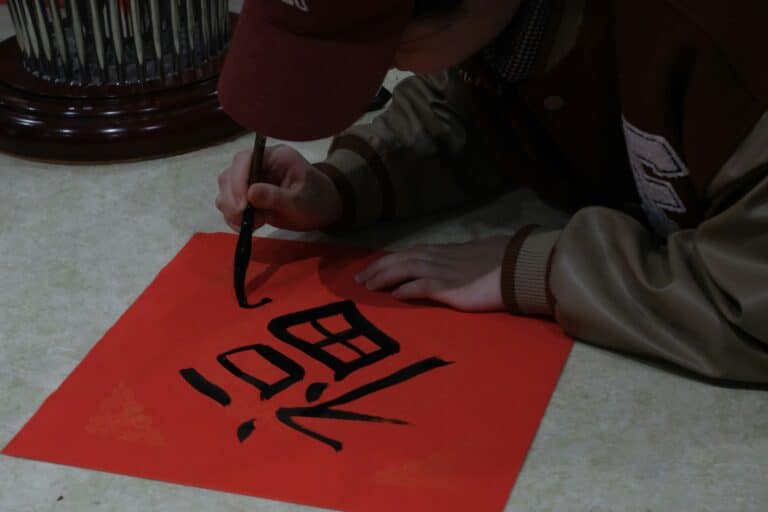Over the years, the Dragon Boat Festival has become a celebrated tradition, filled with vibrant rituals and community spirit. If you wish to elevate your experience this year, follow these four creative steps to personalise your festivities. You'll discover the art of dragon boat racing, learn how to prepare traditional Zongzi, and immerse yourself in cultural activities that embrace the essence of this ancient celebration. By implementing these ideas, you can ensure a memorable and joyous event for all your guests.
Key Takeaways:
- Embrace Traditions: Incorporate traditional elements such as dragon boat races, rice dumplings, and cultural performances to enrich your celebration.
- Culinary Delights: Prepare and showcase unique recipes inspired by the festival, particularly zongzi, to highlight the festive spirit.
- Engage the Community: Organise community events to encourage local participation and foster connections among residents.
- Creative Decorations: Use creative and vibrant decorations that reflect the colours and symbols associated with the festival to enhance the atmosphere.
- Interactive Activities: Plan fun and engaging activities, such as dragon boat simulation games, to attract attendees of all ages and make the event memorable.

Understanding the Dragon Boat Festival
Before you probe into creating your own Dragon Boat Festival festivities, it's important to understand the rich cultural significance behind this vibrant celebration. The festival, celebrated on the 5th day of the 5th lunar month, honours the ancient poet Qu Yuan, who tragically drowned himself in protest against corruption. As you engage with your celebrations, it's vital to keep these historical roots in mind to truly appreciate the festivities.
Historical Significance
Among the myriad festivals celebrated in China, the Dragon Boat Festival stands out for its deep historical resonance, honouring Qu Yuan's legacy. His commitment to his country and sacrifice in the face of despair exemplifies a sense of patriotism and loyalty that inspires many to this day. Incorporating this narrative into your celebrations can enhance understanding and appreciation amongst your guests.
Traditional Customs
Against this backdrop of history, the Dragon Boat Festival is rich with traditional customs, each contributing to the festive atmosphere. The excitement of dragon boat racing, a central activity, reflects both community spirit and friendly competition. Furthermore, the preparation and enjoyment of zongzi, sticky rice dumplings wrapped in bamboo leaves, also enrich the experience.
Hence, as you plan your own Dragon Boat Festival events, appreciate that zongzi are not merely a dish but an embodiment of unity and celebration. They are typically filled with various ingredients like red beans, pork, or chestnuts, symbolising abundance and prosperity. Engaging in dragon boat races not only encourages camaraderie among your guests but also pays homage to the brave spirit of Qu Yuan. Your festivities can thus transport others into a cultural experience where shared stories and communal activities forge lasting connections.
Step 1: Planning Your Festivities
The first step in creating your own Dragon Boat Festival festivities is to plan thoroughly. Consider incorporating Creative Dragon Boat Festival DIY Activities to make your event stand out. Make a checklist of all imperative elements—including food, decor, and activities—to ensure everything runs smoothly on the day.
Choosing Date and Location
Date is vital when planning your Dragon Boat Festival. Choose a weekend in June or the beginning of July to align with traditional celebrations. Consider an outdoor location near water, as it reflects the festival's roots and adds to the atmosphere. Ensure your chosen site has enough space for activities, seating, and access to amenities.
Inviting Participants
After you've finalised the date and location, it's time to invite participants. Use a combination of social media, emails, and printed invitations to reach out to your friends, family, and the local community. Be clear about the event details and encourage participants to join in the festivities, such as dragon boat racing or food preparation.
Your invitations should convey enthusiasm and communicate the unique experiences your Dragon Boat Festival will offer. Highlight activities such as racing, cultural performances, and food tasting to pique interest. You might consider using an engaging design that reflects the festival theme, ensuring the event feels inclusive and inviting, which encourages more participants to come along.
Step 2: DIY Decorations and Setup
Not only will your Dragon Boat Festival be memorable, but you can also personalise it with some DIY decorations. Engage your creativity by crafting vibrant decorations that reflect the spirit of the festival. For inspiration, check out this DIY Dragon Boat with Chopstick Oars project to get started on your unique creations!
Crafting Traditional Elements
One way to honour the festival's heritage is by crafting traditional elements such as dragon boat models and colourful zongzi (rice dumplings). Use materials like paper, fabric, or even recycled items to create a vibrant atmosphere that resonates with the festivities. Get creative with your designs and involve your loved ones in the process for a truly engaging experience.
Setting the Ambiance
Before the celebrations commence, focus on setting the right ambiance for your gathering. Use warm lighting, vibrant colours, and traditional music to evoke the spirit of the Dragon Boat Festival, ensuring that every aspect of your setup enhances the overall experience.
Ambiance is integral to immersing your guests in the festive mood. Consider using lanterns, banners, and floral arrangements in festive colours such as red and gold, which symbolise joy and prosperity. Additionally, having soft traditional music playing in the background will elevate the atmosphere, encouraging your guests to feel both relaxed and festive. When these elements come together, you'll create a space that draws everyone into the celebratory experience of the Dragon Boat Festival.

Step 3: Organizing Food and Drinks
All the festivities wouldn't be complete without a delightful array of food and drinks that pay homage to this vibrant occasion. You can create an inviting atmosphere by preparing traditional dishes and beverages that reflect the spirit of the Dragon Boat Festival. For more inspiration, visit Celebrate the Dragon Boat Festival at Home with Activities, ….
Traditional Dishes to Prepare
One of the highlights of the Dragon Boat Festival is the delectable dumplings known as zongzi. You can prepare these sticky rice treats wrapped in bamboo leaves, often filled with meat, beans, or nuts, creating a perfect balance of savoury and sweet flavours for your guests to enjoy.
Incorporating Seasonal Ingredients
Any great celebration involves the use of seasonal ingredients to enhance your dishes. Incorporating fresh, local produce will not only elevate the flavours but will also make your feast more visually appealing and sustainable.
Indeed, using seasonal ingredients allows you to create dishes that are not only delicious but also nutritious and environmentally friendly. By sourcing local vegetables, fruits, and herbs, you can ensure the highest quality and flavour in your meals. Moreover, embracing seasonal produce cultivates a deeper connection to the nature and traditions of the festival, while supporting your local economy. This approach reflects a commitment to freshness and sustainability, enriching your Dragon Boat Festival experience.
Step 4: Engaging Activities and Entertainment
Once again, immersing your guests in festive fun is key to a successful Dragon Boat Festival. Provide a variety of engaging activities, from games to interactive workshops, that celebrate tradition while encouraging participation. Make sure to include activities suitable for all ages, ensuring everyone feels included in the festivities. You might even consider inviting local artisans to showcase their crafts, adding to the vibrant atmosphere of your event.
Organising Dragon Boat Races
With dragon boat races as the highlight of your festival, you will create an exhilarating atmosphere. Harness the enthusiasm of participants by organising teams, promoting friendly competition, and providing a proper training session for newcomers. Encourage local clubs and organisations to take part, fostering community spirit and showcasing the rich heritage of this time-honoured tradition.
Hosting Cultural Performances
Activities such as traditional dance, music, and storytelling enrich your festival. Integrating these performances will create an immersive experience for your guests. Inviting local artists to showcase their talents fosters a sense of community and celebrates cultural diversity.
Another fantastic way to enhance your festival is by hosting vibrant cultural performances that reflect the true essence of the Dragon Boat Festival. Incorporating traditional dances, musical acts, and storytelling sessions not only entertains your guests but also educates them about this rich cultural heritage. Engaging local performers can foster a sense of community and give a platform to emerging talent. This blend of culture and entertainment will surely captivate your audience and create unforgettable memories during your celebrations.
Final Words
Taking this into account, by following these four creative steps, you can successfully craft your own Dragon Boat Festival festivities that resonate with tradition yet reflect your personal touch. Start by engaging your community with activities that celebrate cultural heritage, incorporate unique decorations to evoke the spirit of the festival, curate traditional delicacies for an authentic taste experience, and host fun dragon boat races or similar activities to foster camaraderie. By doing so, you will not only honour the customs but also create memorable moments for everyone involved.
FAQ
Q: What are the four creative steps to create my own Dragon Boat Festival festivities?
A: The four creative steps to organise your own Dragon Boat Festival festivities include: 1) Planning the Event – Choose a suitable date, location, and gather resources. 2) Engaging Participants – Invite friends, family, or local schools to form teams or participate. 3) Crafting Dragon Boats – Use recycled materials to make dragon boat models, allowing for creativity. 4) Celebrating with Traditional Activities – Incorporate cultural practices, such as zongzi making or traditional games, to enrich the experience.
Q: How can I involve the community in the festival?
A: Involving the community can be achieved by promoting the event through local social media, community boards, or schools. Encourage local businesses to sponsor teams or donate prizes. Moreover, organise workshops prior to the festival for people to learn about the traditions and craft their own decorations or dragon boats. This creates a sense of ownership and encourages community spirit.
Q: What materials do I need to create dragon boats?
A: To create dragon boats for the festival, you can use a variety of materials such as cardboard, plastic bottles, and craft paper. Paint and markers can add vibrancy, while decorations can include ribbons and beads for added aesthetics. There's no need for expensive supplies; the focus should be on creativity and teamwork.
Q: What traditional activities can I include in my Dragon Boat Festival festivities?
A: Traditional activities you can include are zongzi-making workshops, where participants can learn to wrap and cook sticky rice dumplings filled with diverse fillings. Other activities could be traditional games like tug-of-war or relay races. Additionally, you could organise storytelling sessions featuring folklore associated with the festival, enhancing the cultural experience.
Q: How can I ensure the safety of participants during the festival?
A: Ensuring safety can be managed by assessing the venue for potential hazards and preparing first-aid kits. If water activities are involved, it is necessary to have life jackets available and to supervise participants closely. Encouraging physical distancing and hygiene practices will also contribute to a safe environment for all attendees during the festivities.
